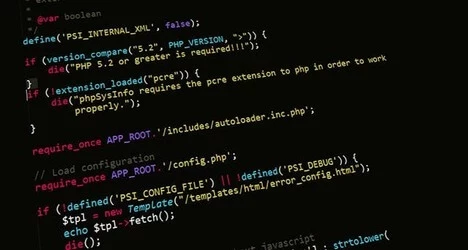Artificial intelligence's role in Human Resources
Add bookmark
When it comes to artificial intelligence (AI) in Human Resources, it is a tool for digital transformation and it is embroiled in fear and anxiety. Understanding AI and its evolution is a good place to begin a journey of exploration.
AI in the workplace is not new. The recent explosion and concerns have been with generative AI, but we’ve been using predictive AI for some time. Let’s look at the differences.
Watch the PEX Network's All Access: Digital Transformation in HR sessions on demand to further investigate AI in HR.
What is generative AI in HR?
Generative AI models are trained on massive volumes of raw data. While it can’t think like humans, it can create words, sounds, images and video, at sophisticated levels that often mimics human creativity. You are likely familiar with chatbots. They are backed by large language models (LLMs)—deep learning algorithms that recognize, summarize, translate and generate new text based on huge data sets.
What is predictive AI in HR?
Predictive AI blends statistical analysis with machine algorithms to find data patterns and forecast future outcomes. In HR it can analyze or forecast the probability of employee retention, offer acceptance rates and benefit utilization rates. It uses smaller, targeted data sets than generative AI to make predictions. In conducting pay equity audits, linear regression analysis—a statistical algorithm—is often used to analyze the relationship between variables.
What do HR leaders need to know about AI?
While predictive AI is focused, using specific data sets to make forecasts, generative AI creates or produces novel content based on large amounts of data. What should leaders consider about its use in Human Resources?
Fears and concerns. Employees are likely most fearful that their jobs will be replaced. This can lead to the new phenomena of quiet cracking or employee disengagement, tanked performance and plans to quit. Such disengagement could be the result of a lack of training.
Rather than approaching AI as a threat, there is an opportunity to focus on employee development and growth. There has never been a better time or a better reason to provide workers, especially those workers in process-oriented jobs, with new skills so they can take on more exciting and challenging work.
However, HR has yet to make AI training a priority, according to a Conference Board report. Only 7 percent are implementing reskilling strategies for job roles with a high probability of at least a quarter of tasks being taken over by AI versus 62 percent whose top AI priority includes experimentation with pilots and use cases for human capital management functions. This is a lost opportunity.
HR leaders should be concerned about an overreliance on AI for making decisions and the temptation to take judgment out of the decision-making process.
There are so many things in HR that are not black and white—issues involving human behavior. In these circumstances, there’s not ONE RIGHT way to handle any given situation. That is the underlying theme of our book, They Did What? It was written from the employee relations perspective of HR.
Data is a tool to aid decision making, not to replace it. While AI is capable of summarizing complex and lengthy documents, other factors must be considered when determining the appropriate actions to take in behavioral situations.
Uses for AI in HR. There are many opportunities for AI to support HR and employees—without replacing the human touch. Yet those opportunities must be approached with caution.
Consider its use in a service-center environment where employees are seeking answers. A simple question about benefits coverage—does our vision care cover contact lenses—could be answered yes or no, then point employees to further information. This is not much different than chatbots used for customer or consumer service. Such use would free up HR staff to focus on more complex issues that need human interaction, such as assisting an employee with a request for a FMLA leave.
While some questions may require only a yes or no answer, there should be a mechanism for auditing the types and frequency of questions. An abundance of questions around a certain benefit issue, for example, might suggest the need for better employee communication. More seriously, a frequent pattern of questions about the harassment policy might signal a systemic problem which requires greater intervention and investigation. And if investigation is not forthcoming, it could result in significant legal issues.
Maintain organizational values. Exercise caution in adopting AI. Be a fast follower rather than a fearless leader. Avoid the AI slop, as Seth Godin says.
Understand employees’ needs and fears, and take a measured, conservative approach. Show employees how AI will aid them and not replace them. People are not resistant of change; they are resistant of being changed. So, invite them into the process when you are implementing AI tools, especially tools they will be using. Let them be involved.
Caution also means taking the time to learn and understand AI. If you leave it to the technology companies who are creating it, you risk their culture absorbing yours, and you don’t want to take the humanness out of Human Resources.
Keep in mind that there are human skills and traits that should never be replaced by AI, the most important of which is empathy—the heart of being human. Employees need to know that someone is listening to them and really cares. Paul Shank calls empathy a superpower and leadership imperative. It’s the ability to genuinely understand and connect with others. Empathy builds trust and trust builds strong teams.
Final thoughts: Rather than allowing AI to confuse you, understand it. Rather than letting AI define your culture, define how AI will support your organization, your employees and your culture. Set the standard for how AI will be used in your organization’s HR function.
















